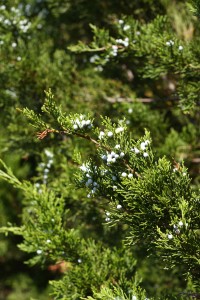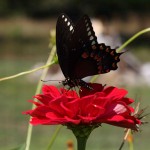Ten Things:
You can do to help wildlife In your backyard
By Ben Wurst, Habitat Program Manager

1. Plant trees! The more the better, plant evergreens on the north-east side of your house and deciduous on the south side. Evergreens provide cover to birds and other wildlife in winter months and also shelter to your house from those cold NW winds. Make sure to choose native species like Eastern red cedar or Pitch pine for NW locations and Tulip poplar or Sweet gum for south locations.
2. Minimize use of pesticides and herbicides. Use only plant based pesticides, like ones made with Pyrethrum, which is made from the dried flower heads of Chrysanthemums. Try using vinegar as a natural alternative to broad spectrum herbicides. Do not use any pesticides or herbicides before any precipitation.
3. Use local and FREE mulch and compost. Many municipalities and county utility authorities provide free mulch to their residents. This is a great way to reuse a large portion of the waste stream in your county. Better yet, start a compost pile in your own backyard!
4. Use native species! They are acclimated to our climate and most are non-invasive. Many plants and trees sold at nurseries are meant to be aesthetically pleasing and most don’t provide suitable habitat for wildlife, besides providing cover.
5. Create a brush pile using branches and logs to provide cover for small mammals, reptiles, and songbirds.
6. Plant fruit bearing shrubs and trees. These can provide food for songbirds and other wildlife throughout the year. From eastern red-cedar and American holly to winged sumac and northern bayberry.

7. Reduce the size of your lawn by planting a wildflower garden. They require less water than cool season grasses and provide nectar to butterflies, bees and hummingbirds and also provide seeds to many songbirds. You will save money and time by reducing the amount of grass on your property.
8. Install bird and bat houses. Bird houses can provide a place for cavity nesting birds to nest, like chickadees, wrens, and bluebirds. Monitor the birdhouse throughout the spring and summer to be sure no exotic species are utilizing it, like European starlings. Maternity bat houses can provide female bats with a place to raise their young. Bats feed on thousands of insects each night. They help control insect populations and in some areas help pollinate fruit and vegetable crops.
9. Wildlife need water to survive. Put out a bird bath or even better, install a pond. A simple bird bath can be a medium-sized saucer or shallow bowl. Change the water frequently to prevent mosquitoes from breeding. Ponds are even better for wildlife, especially amphibians, like frogs, toads, and salamanders. A simple pond can be made out of an old bath tub. Place rocks along the edge, plant some flowers along the edges, and put some branches and rocks in the water to enhance the habitat in the pond.
10. Certify your yard with the National Wildlife Federation and get a yard sign to let others know you provide habitat for wildlife in your backyard!
Discover more from Conserve Wildlife Foundation of NJ
Subscribe to get the latest posts sent to your email.